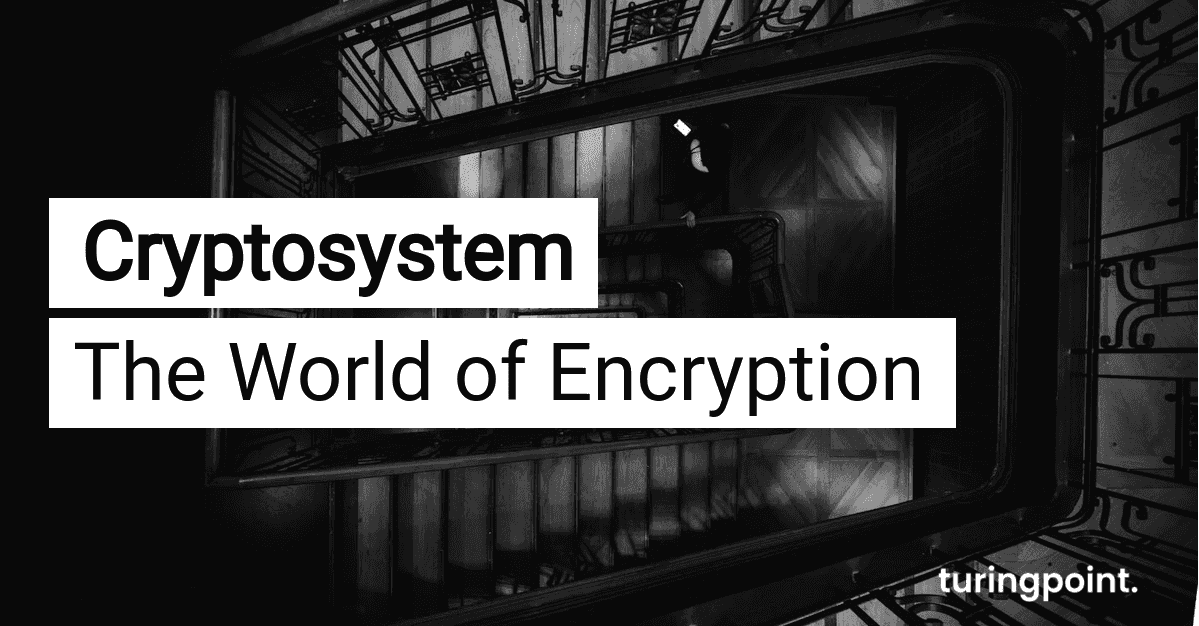Cryptosystem - The World of Encryption
Cryptosystems are used to encrypt data using an encryption method.

Table of content
What is a Cryptosystem?
A cryptosystem is a system such as the RSA cryptosystem or the Rabin cryptosystem. They are used to encrypt data using an encryption method. In doing so, they encrypt plain texts with a cryptographic key. These keys are used, among other things, for secure transport between the sender and receiver of messages.
The special feature of such a cryptosystem is that the texts can only be broken down and converted into plain text with the right cryptographic key. In principle, the more extensive the cryptographic key, the more secure the encryption.
In general, there are three types of encryption: symmetric encryption, asymmetric encryption and hybrid encryption. Depending on the method, the cipher keys can be identical or can be derived directly from each other. In the asymmetric method, for example, different and independent keys are required. Things are more complicated in the case of hybrid encryption: both methods are used here.
The added value offered by a cryptosystem lies in the secure transmission of information. Individual files or even complete directories and drives can be protected against unauthorized access. The approach behind the cryptosystem is basically nothing new, as its first versions date back to ancient Rome.
What are the Cryptosystems?
Modern cryptology is divided into the symmetric and asymmetric encryption schemes. A classic example of symmetric cryptography is the Caesar cryptosystem, which is based on substitution. On the other hand, asymmetric methods are more complicated, requiring a public and a private key.
Symmetric Encryption (private key method)
The symmetric cryptosystem originated in ancient times and was the basis for encryption until 1970s. This system is based on a single key used by multiple parties. However, this system has a weakness: if an unauthorized person knows the code, they can also decrypt the message. This makes it all the more important to protect the key from third parties. This works, for example, with regular pentests that ensure cloud security.
Unlike in Caesar's day, however, encryption is no longer based at the letter level. Instead, the cryptosystem ciphers at the bit level. At this point, a distinction can be made between stream encryption and block encryption.
Asymmetric Encryption (public-key method)
An asymmetric cryptosystem differs from a symmetric cryptosystem in that decryption requires different keys. This means that each party to the communication has its own pair of keys, which must first be verified. The public and private keys form the basis for this. While the private key remains secret, both parties must reveal their public key during communication. This enables the system, usually a key server, to ensure that all parties are allowed access to the encrypted files. This is also where the great strength of asymmetry lies. While in the symmetric cryptosystem the underlying key is passed on, in this case it remains with its owner. This makes it much more difficult for third parties to gain access.
Hybrid Encryption
Hybrid methods combine the advantages of a symmetric system with those of an asymmetric one. The goal is to compensate for the weaknesses of both cryptosystems with the strengths of the other. For example, hybrid ciphers can encrypt user data symmetrically while transmitting it with asymmetric protection. This makes it possible to ensure secure transmission, with fast and reliable ciphering and deciphering.
Multisignatures for higher security can also be a solution: custody solutions for cryptoassets offer their own procedures to ensure data security for institutions and stakeholders alike.
Example RSA Encryption - How a Cryptosystem Works
The right to encryption is becoming increasingly important: after all, it is now easier than ever to gain unauthorized access to data. Those who want to secure their sensitive information can, for example, rely on asymmetric encryption such as the RSA cryptosystem. It is used in numerous applications that transmit data over the Internet.
The reason for this is that the method is considered secure: because there is no algorithm that could be used to determine the private from the public key. This is why the RSA system is also suitable for digital signatures.
The cryptosystem encrypts the desired data using a key. The basis for this are the natural numbers: All underlying data must first be converted into such numbers. The encryption then takes place, using the public RSA key. It is important that both the private and the public key consist of a pair of numbers.
One of the two numbers is identical and is referred to as the RSA module. The numbers involved are decided by the encryption and decryption exponents. They consist of prime numbers of almost the same order of magnitude. Mathematical formulas can then be used to encrypt the desired data.
Only if the necessary private key is available to the recipient can the information be decrypted. If the private RSA key cannot be found, the texts, images or comparable files remain unreadable. In this case, neither the naked eye nor any other program can decrypt them.
By the way, RSA encryption is an integral part of everyday digital life. It is used, for example, by SSL certificates or the HTTPS communication protocol. But e-mails and messengers also rely on this strategy to protect their users from unauthorized access by third parties.
Contact
Curious? Convinced? Interested?
Schedule a no-obligation initial consultation with one of our sales representatives. Use the following link to select an appointment:
